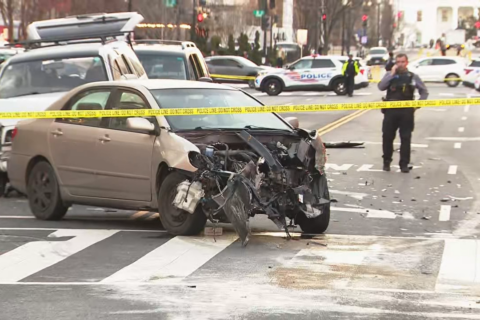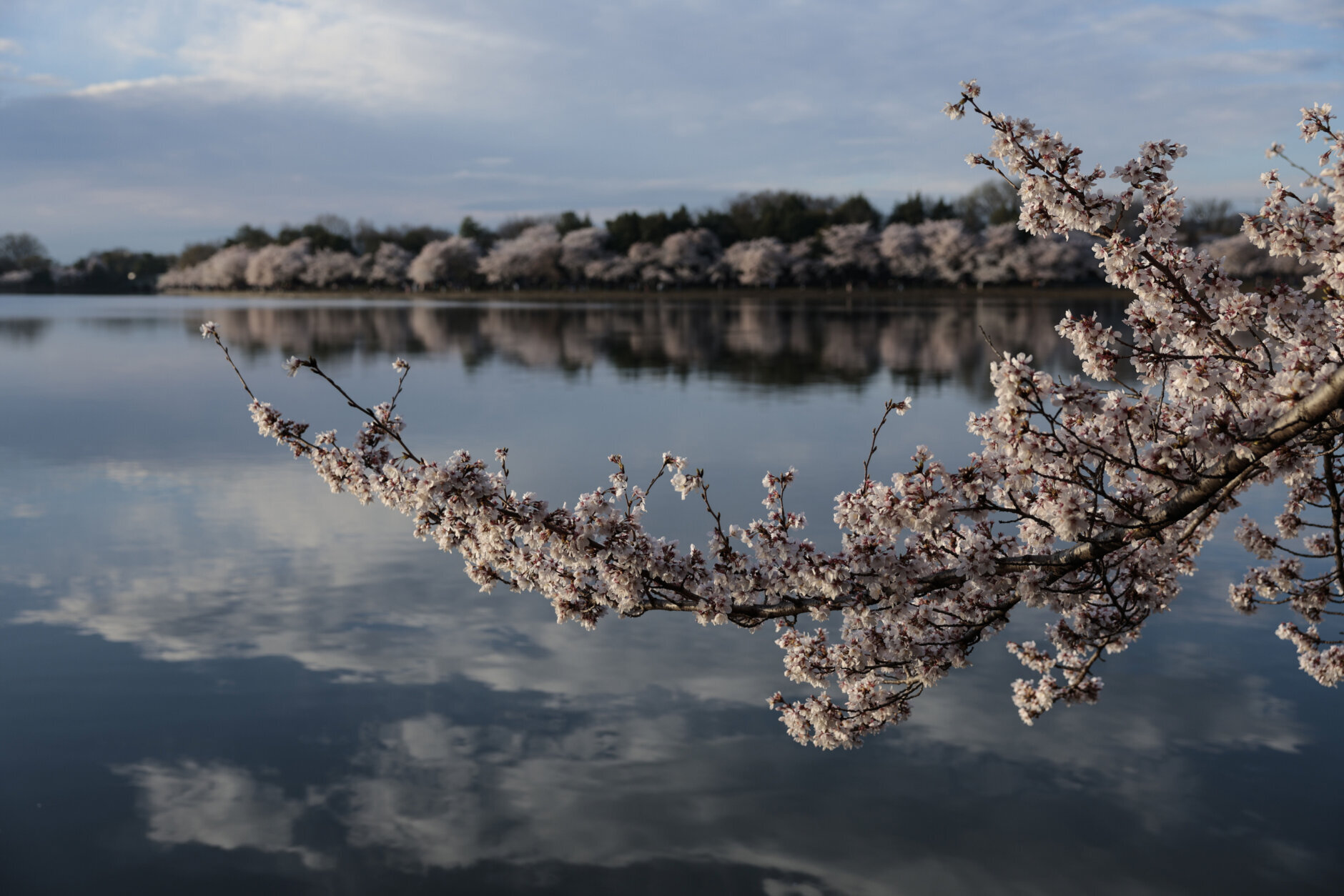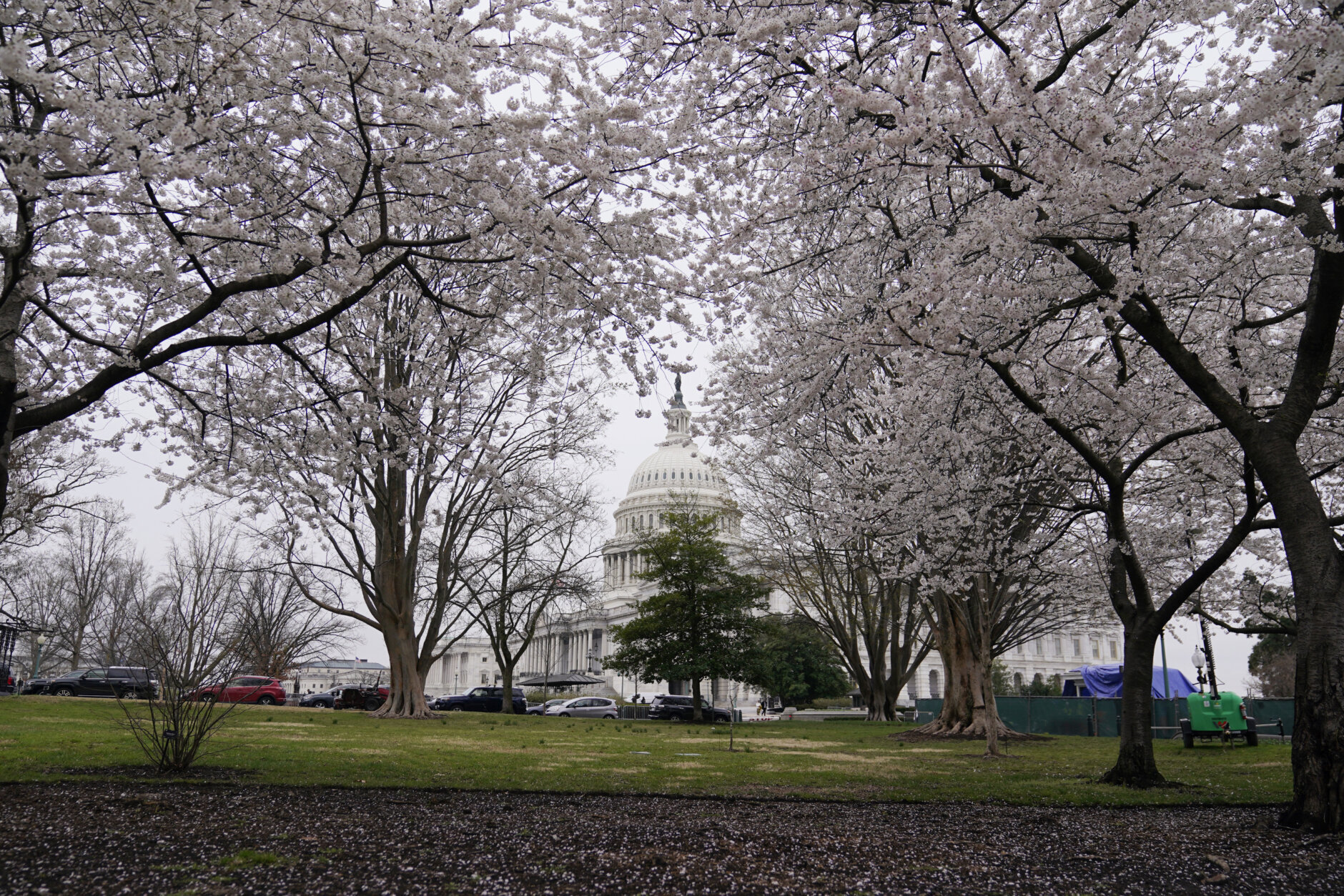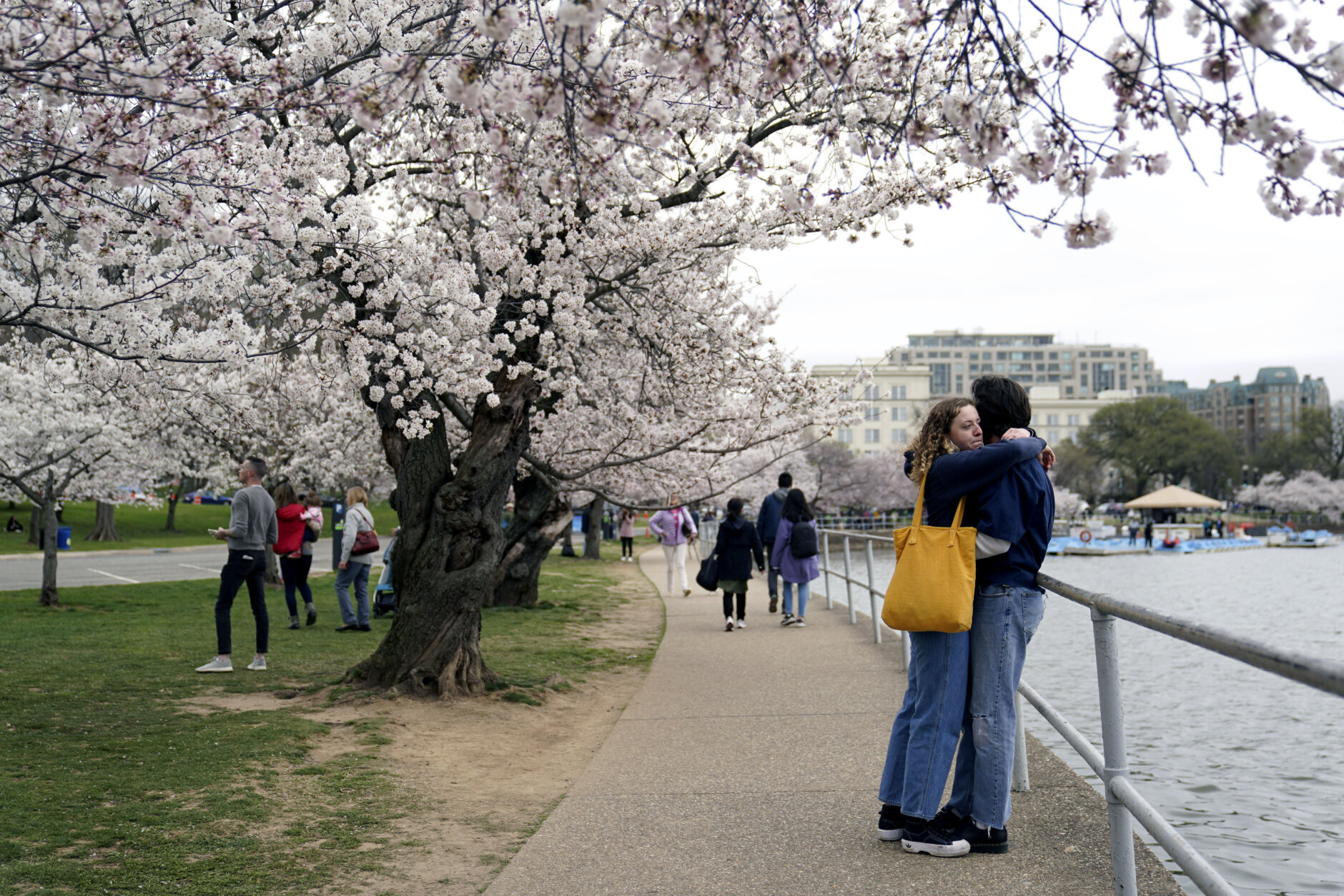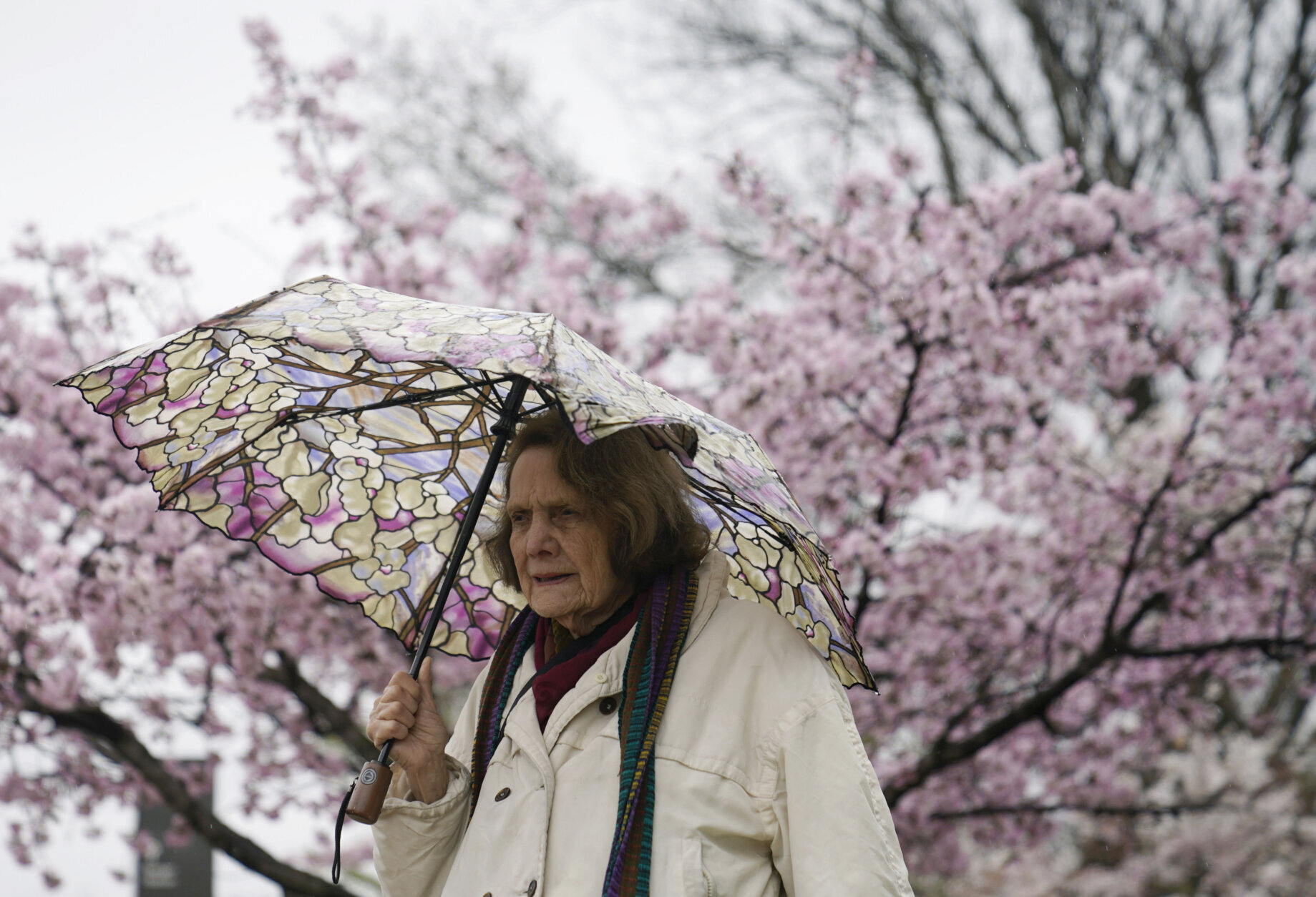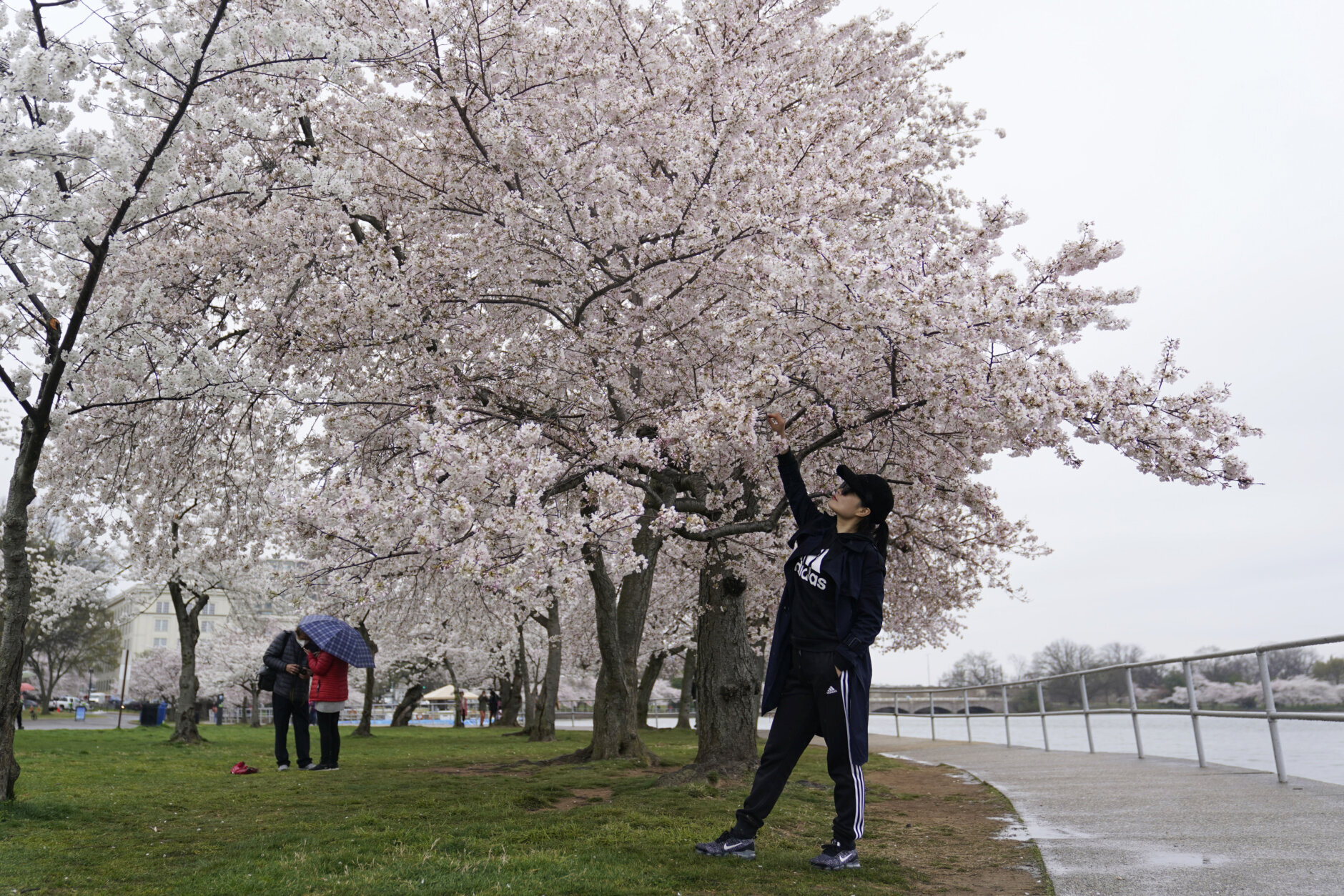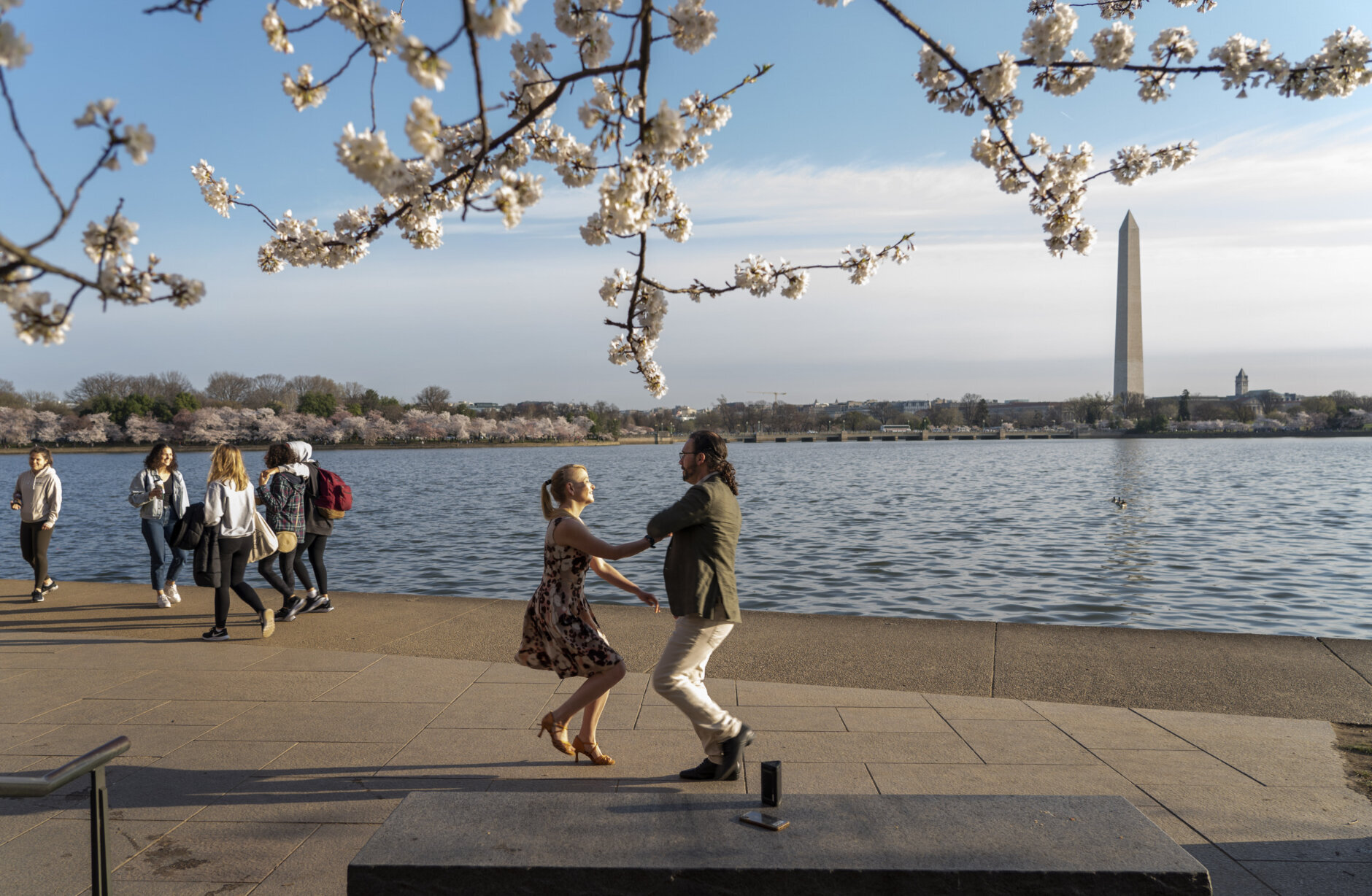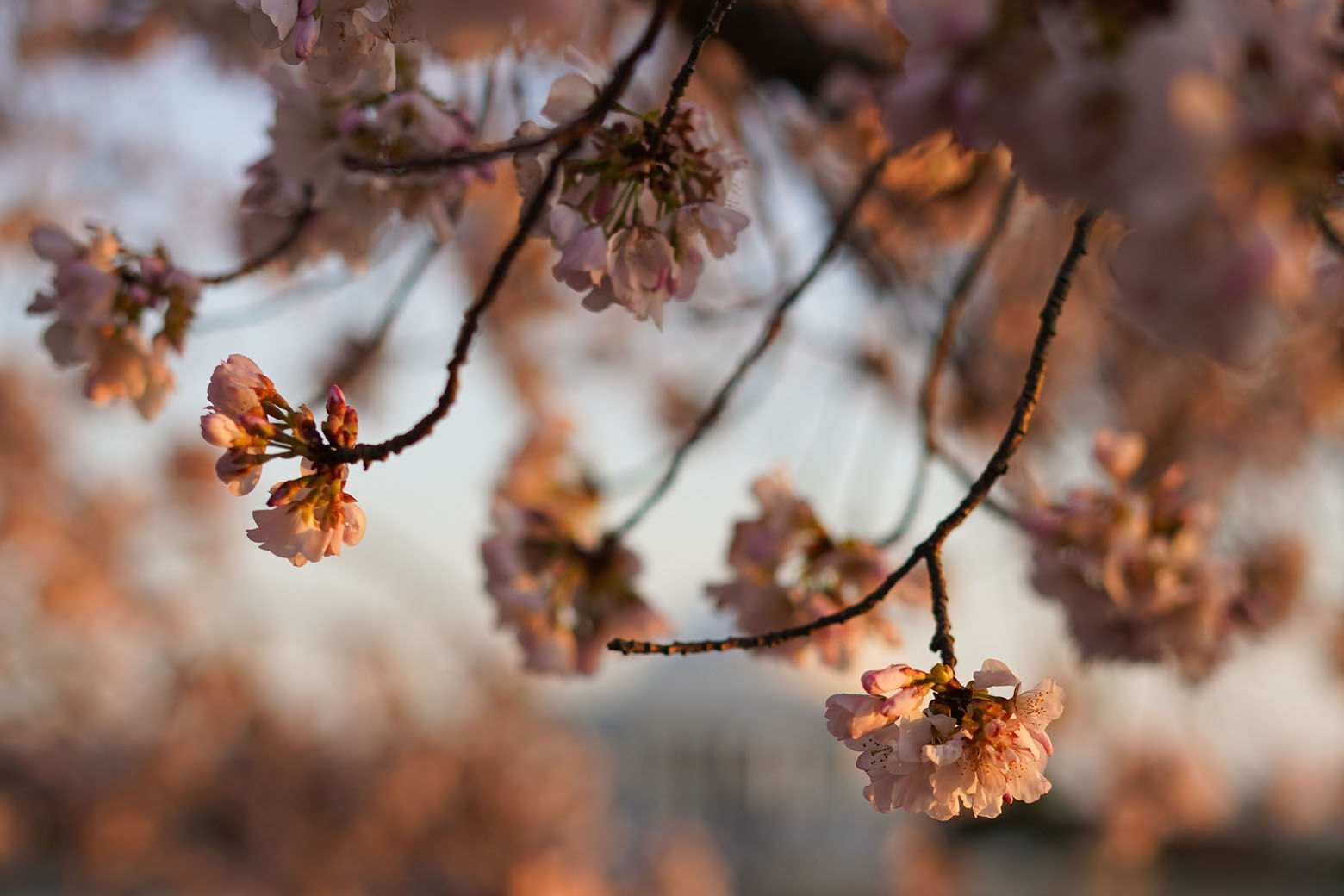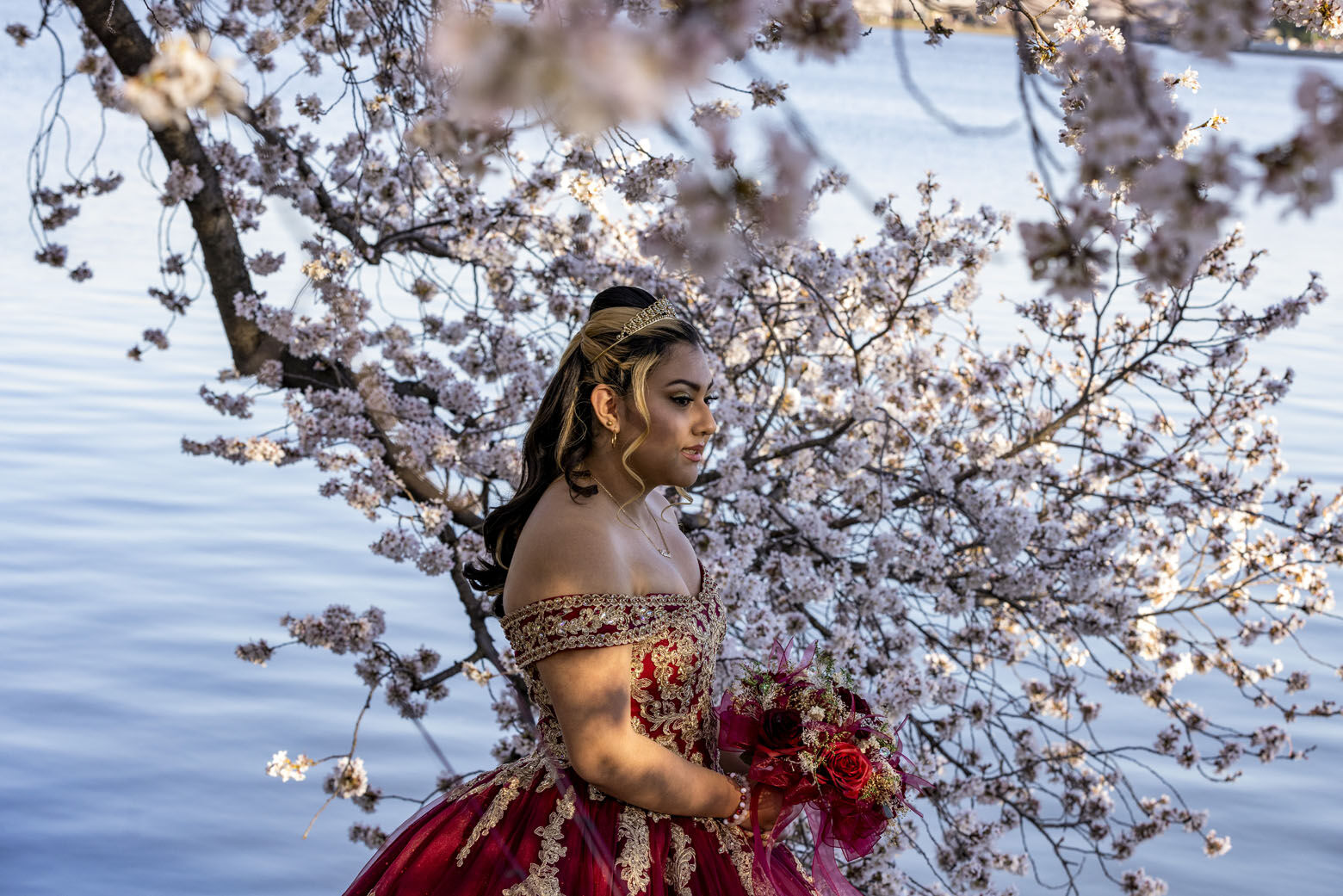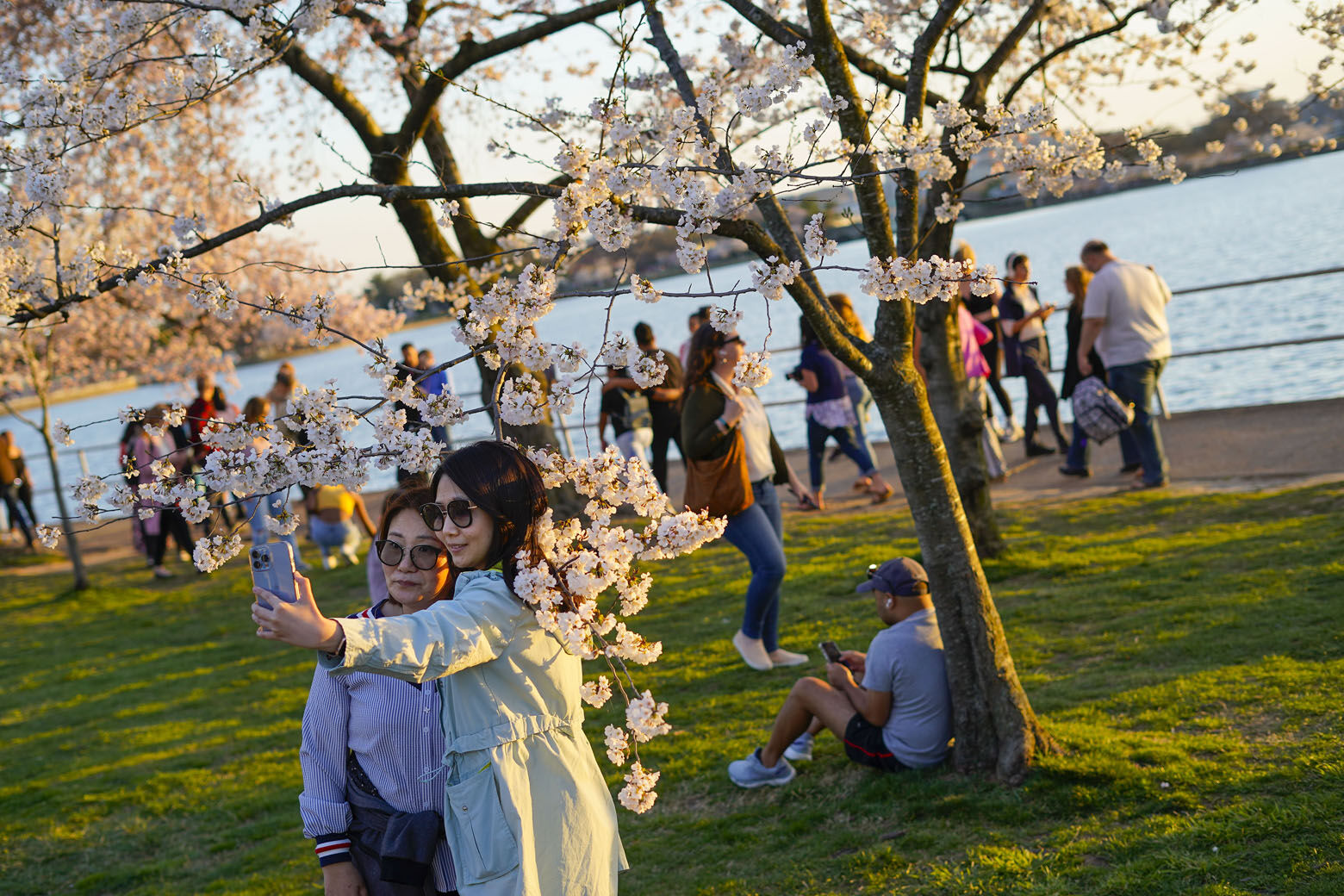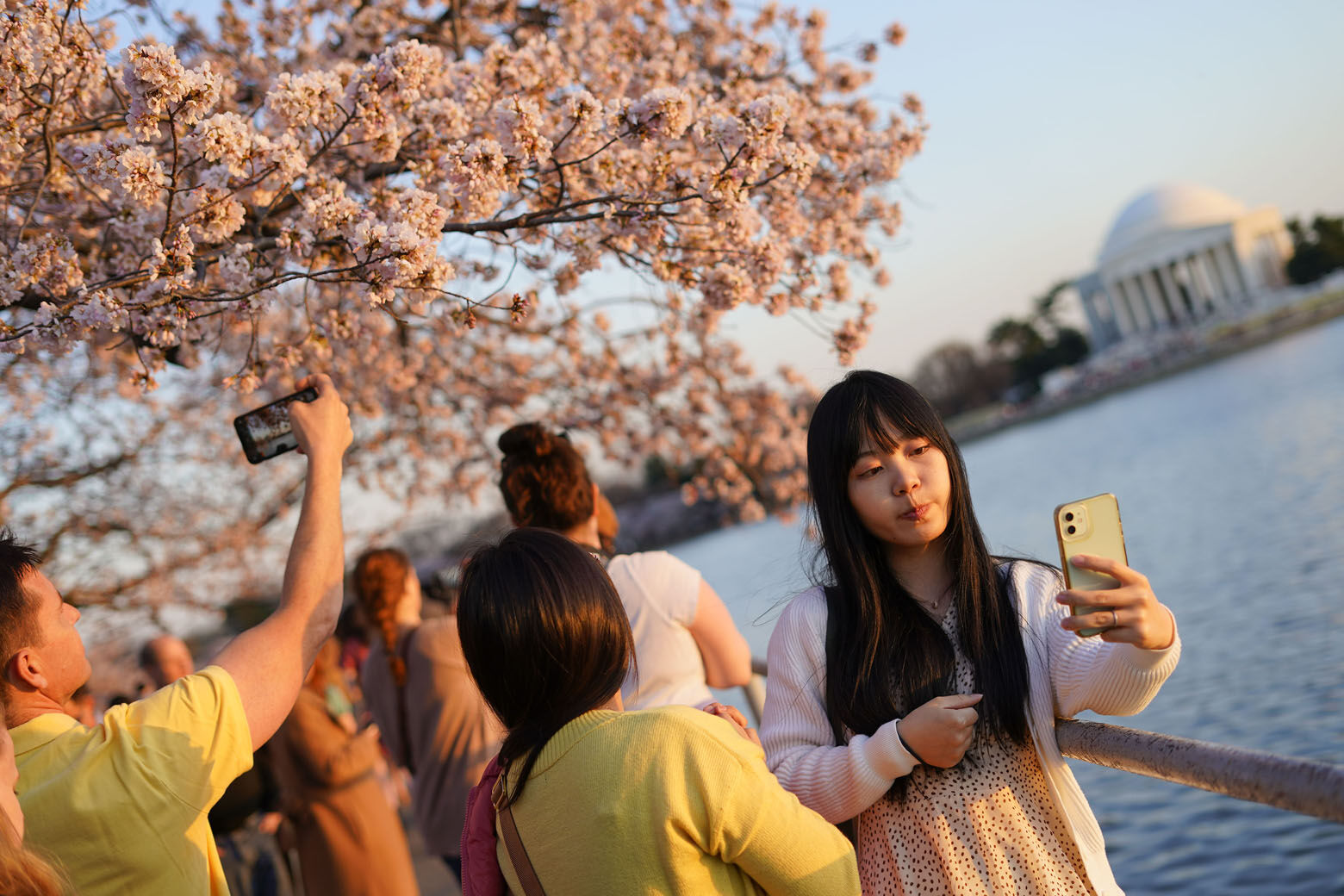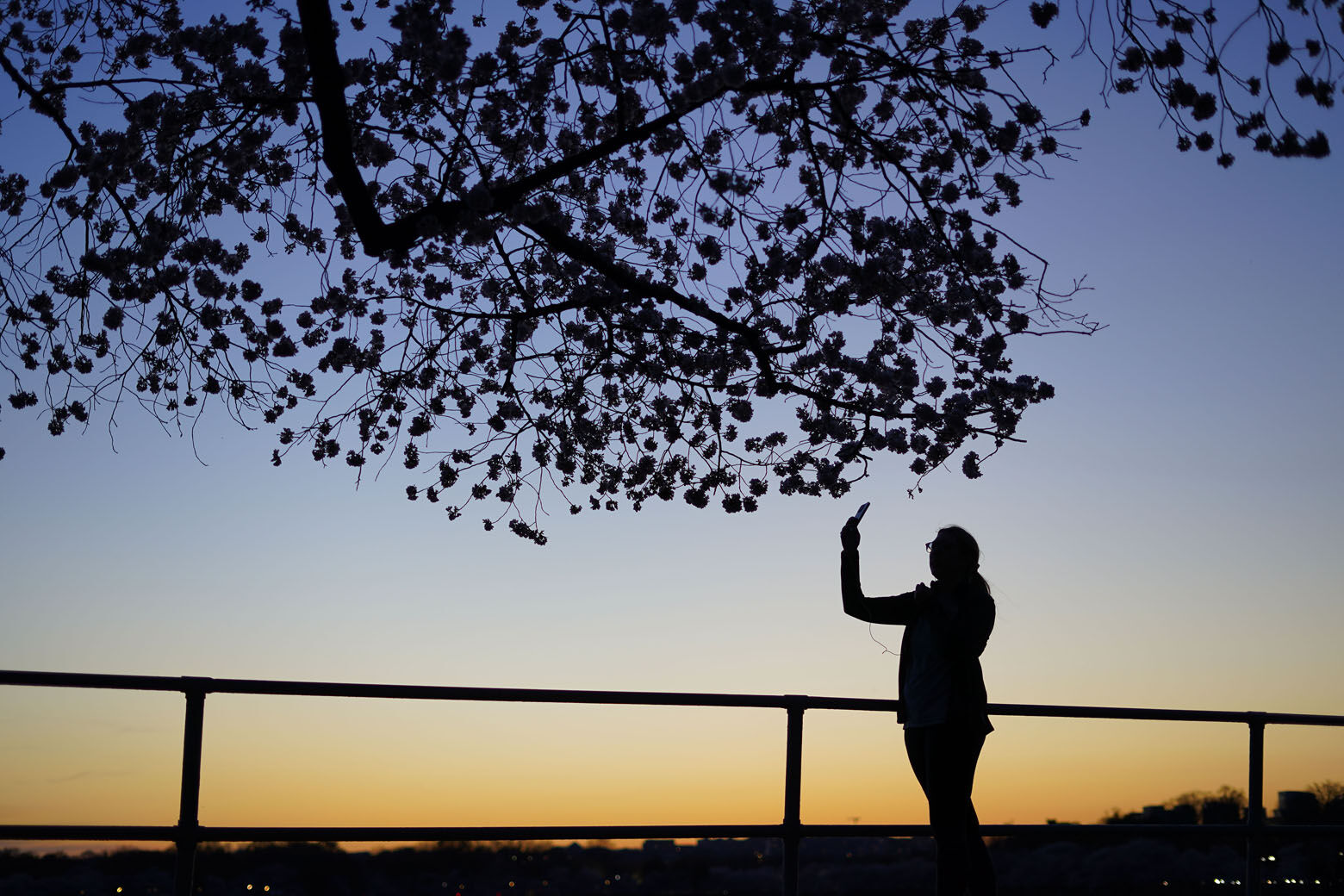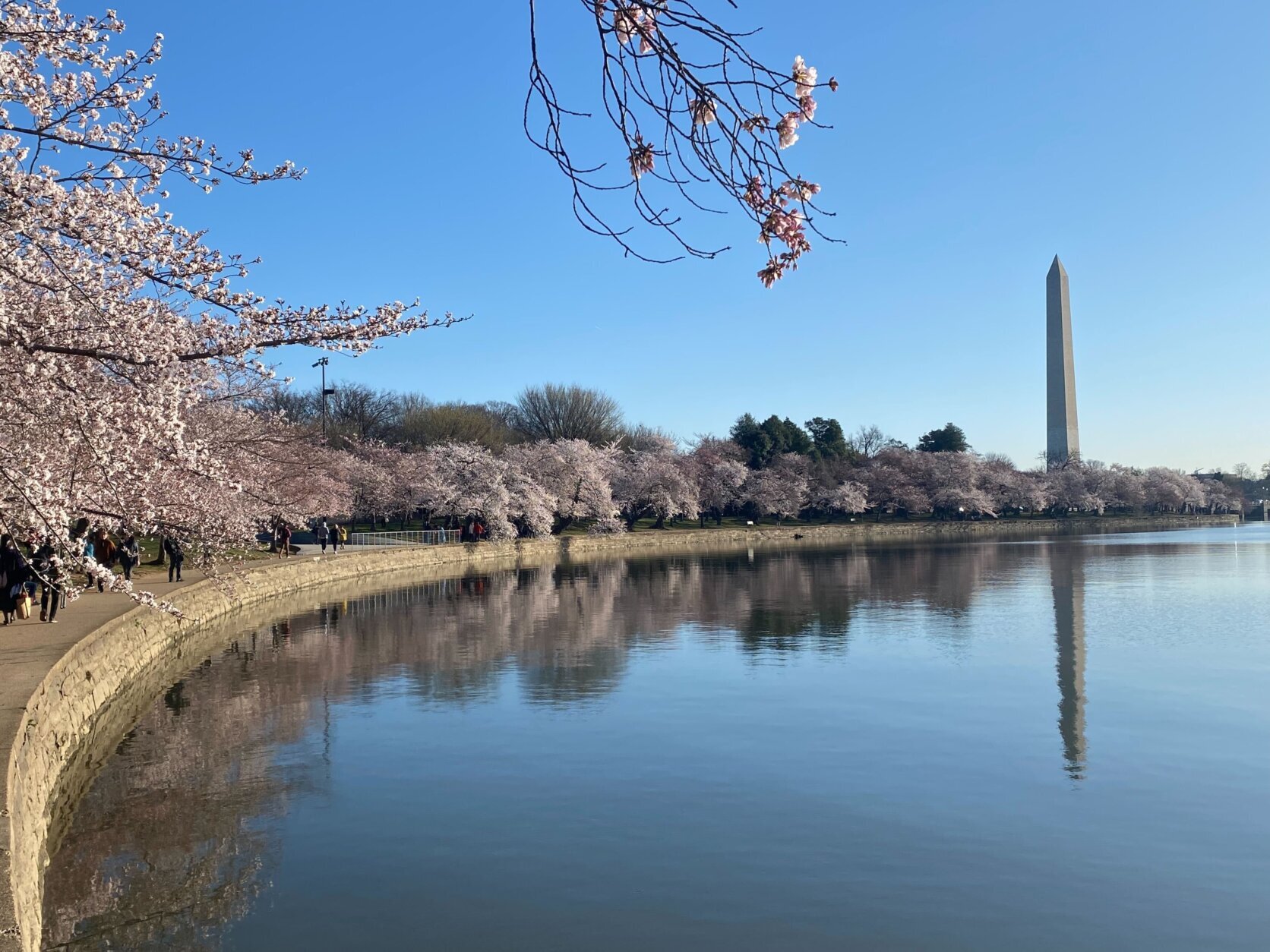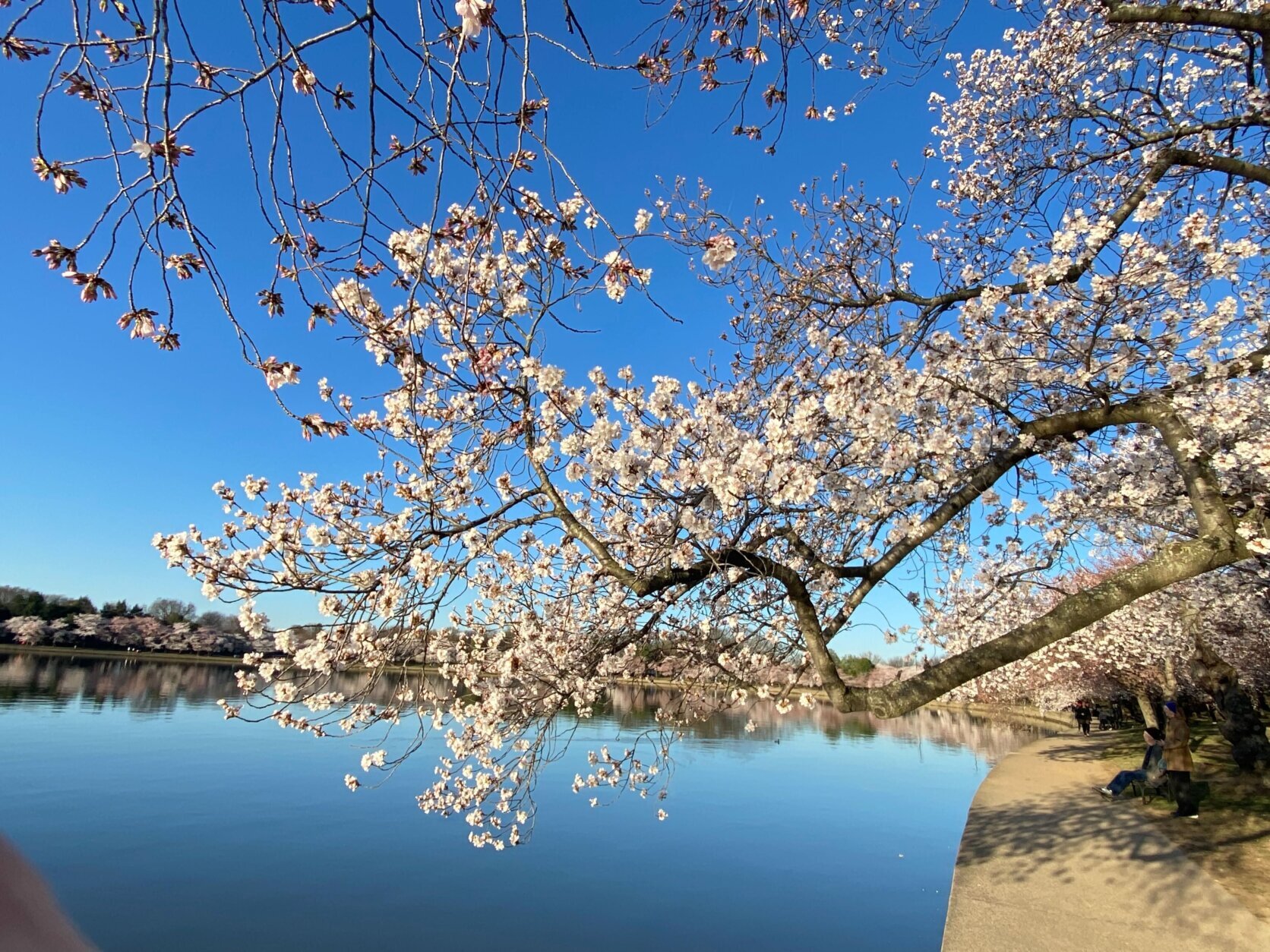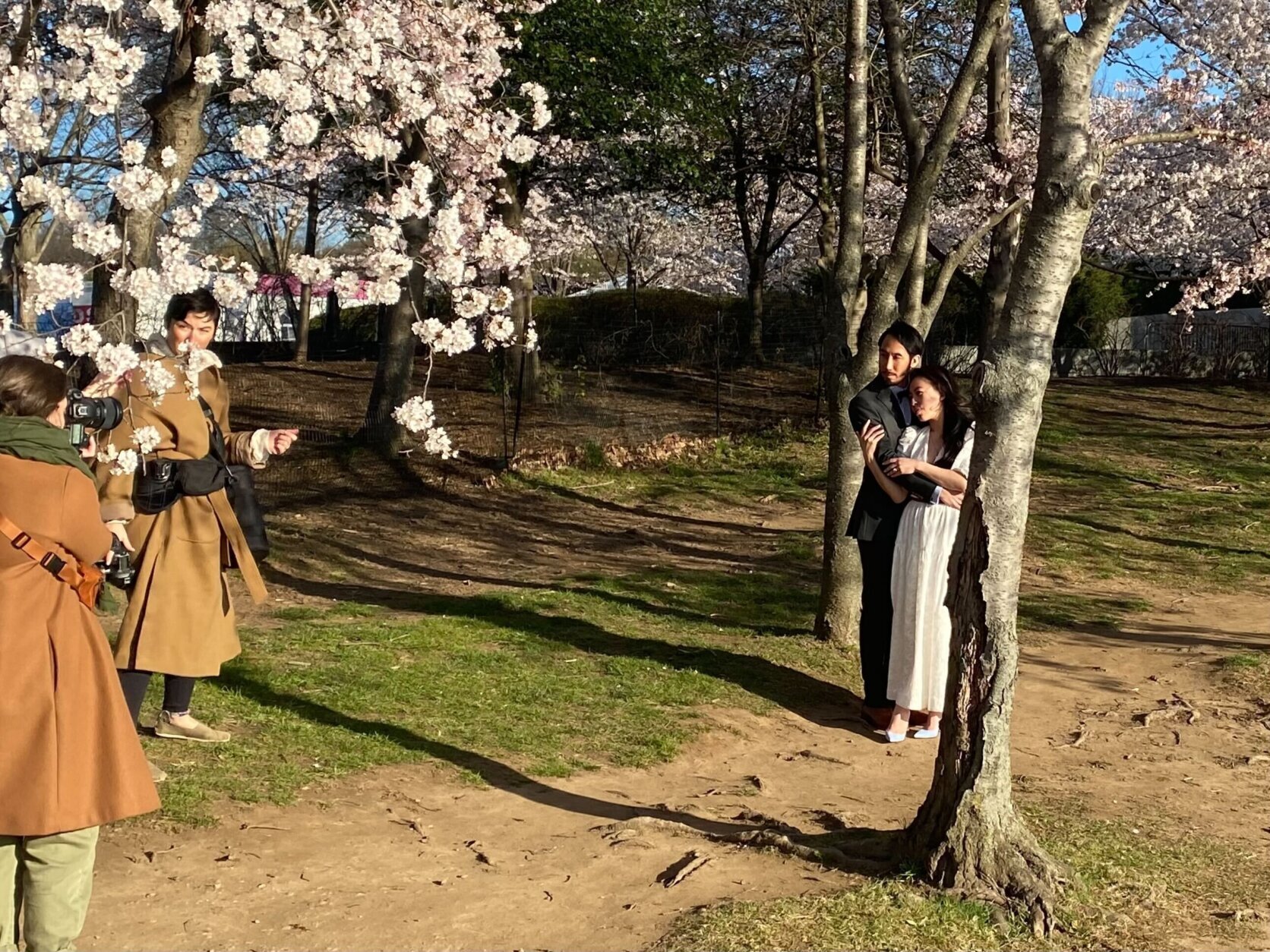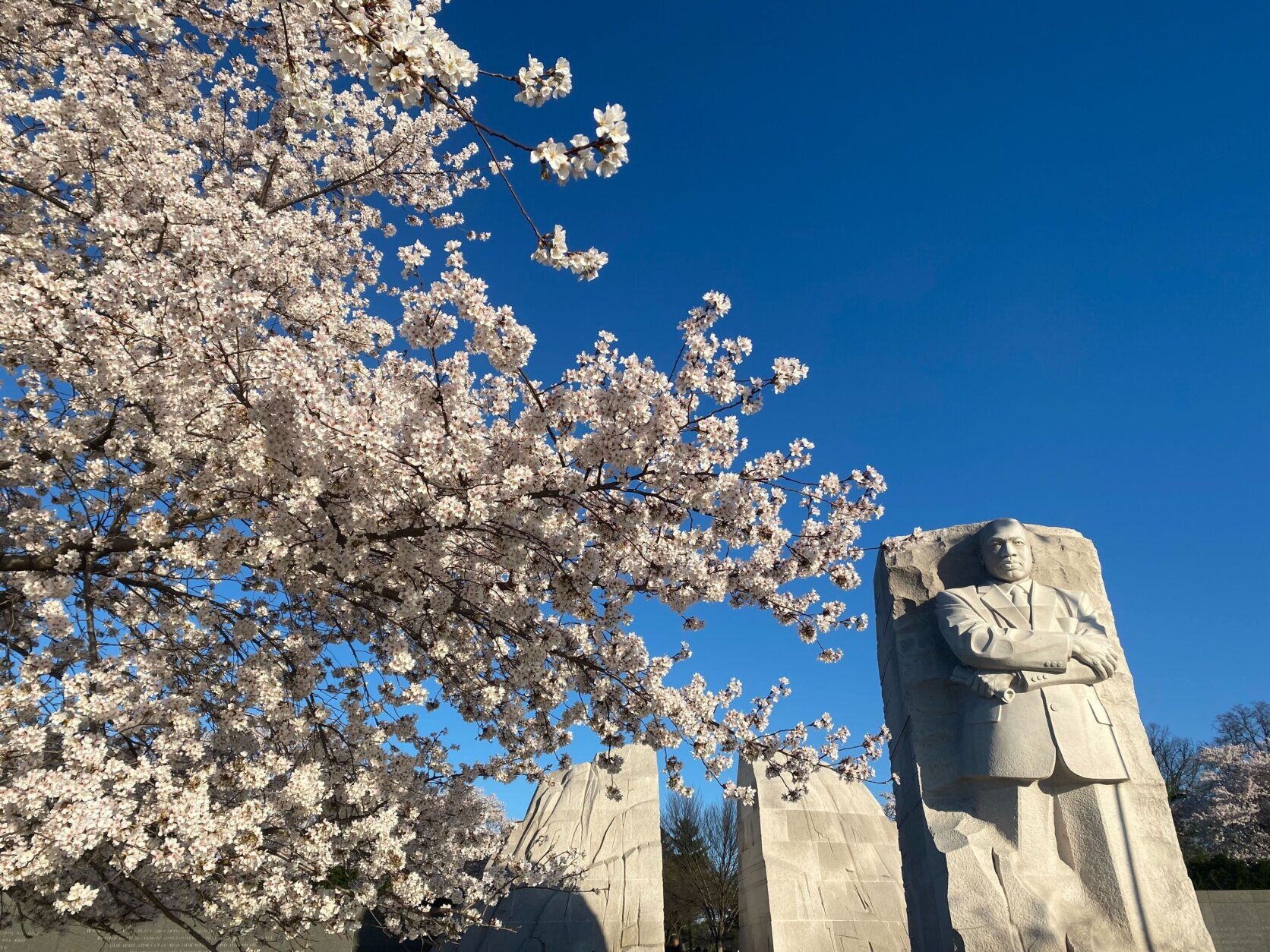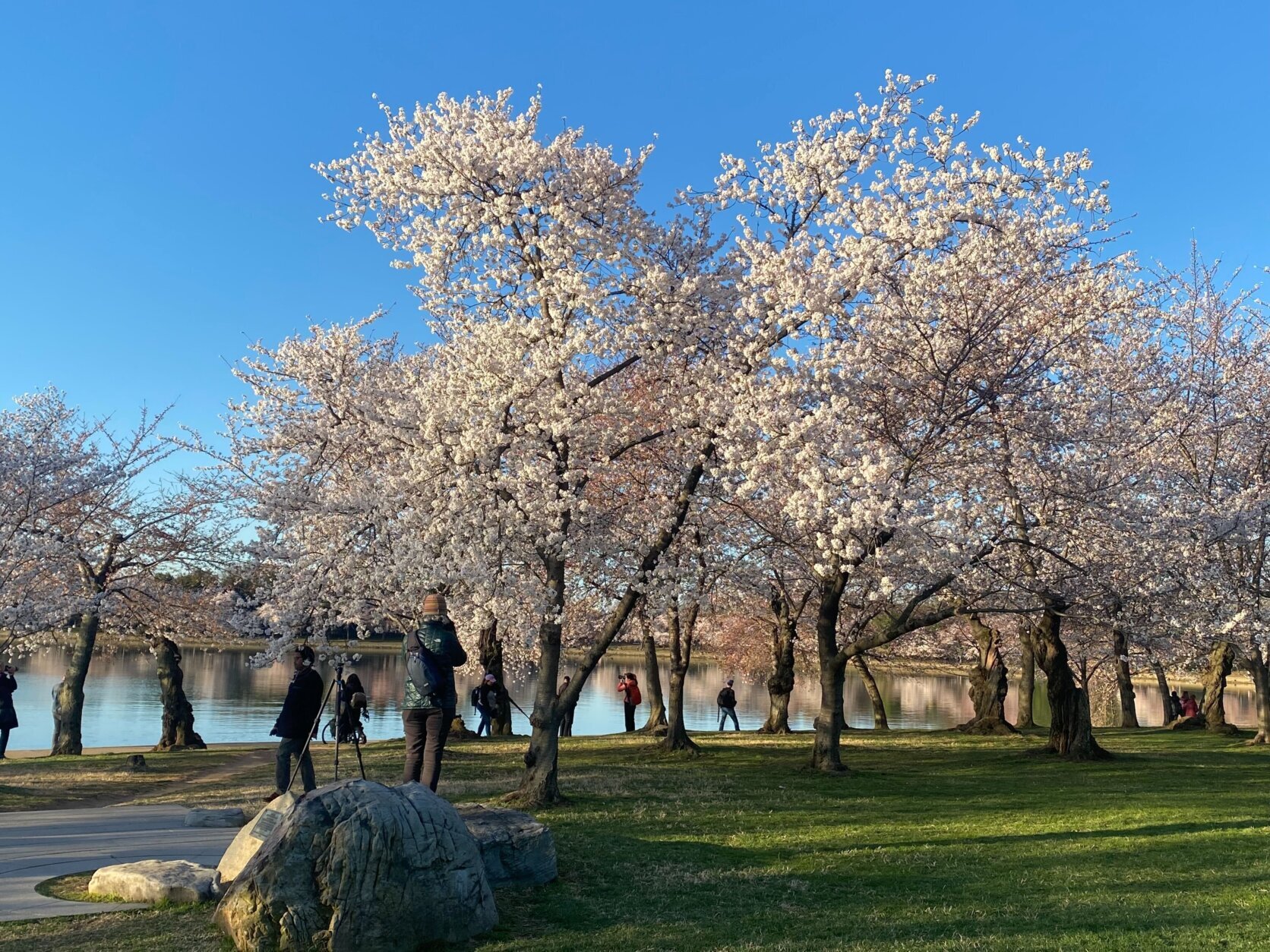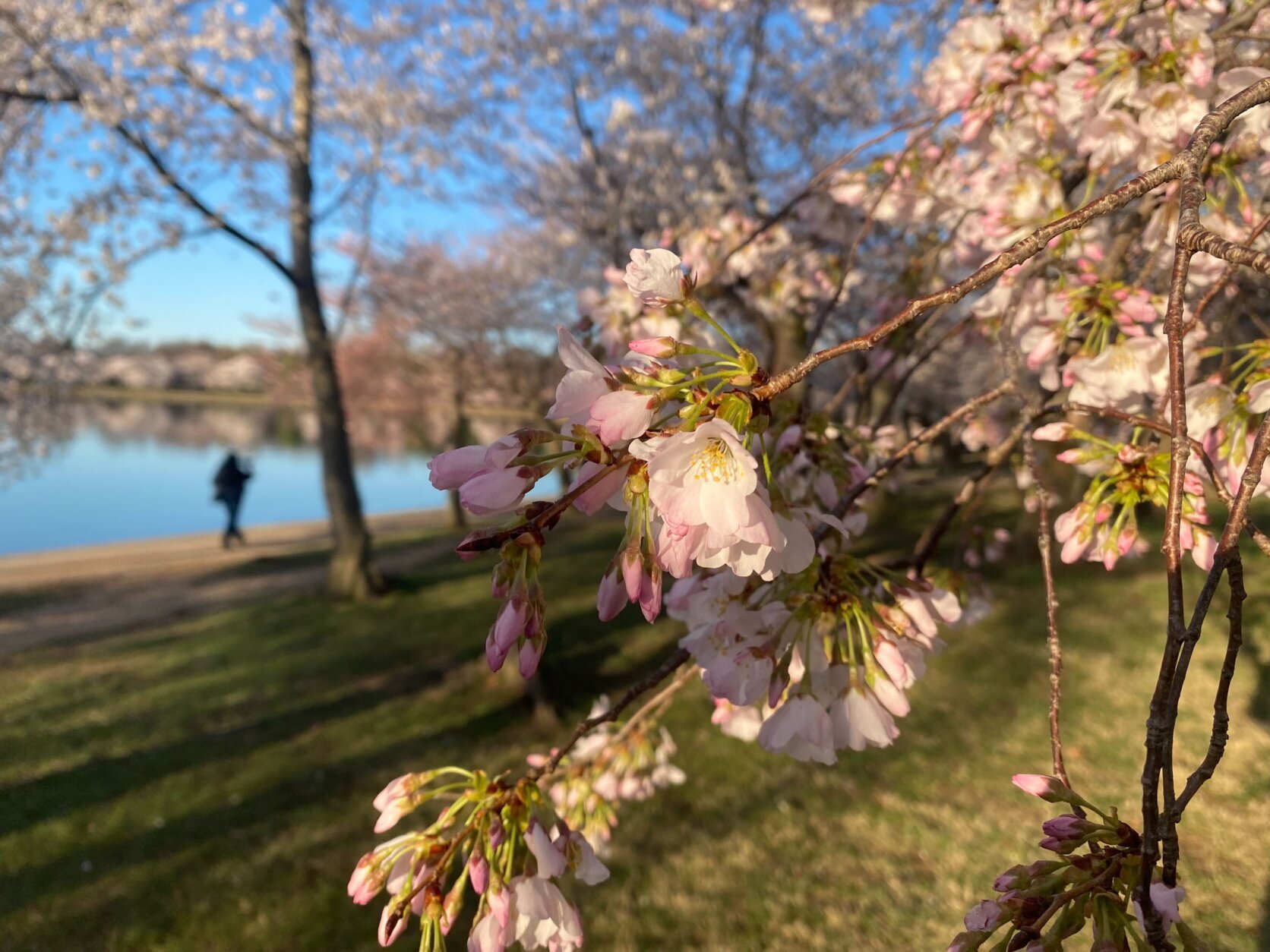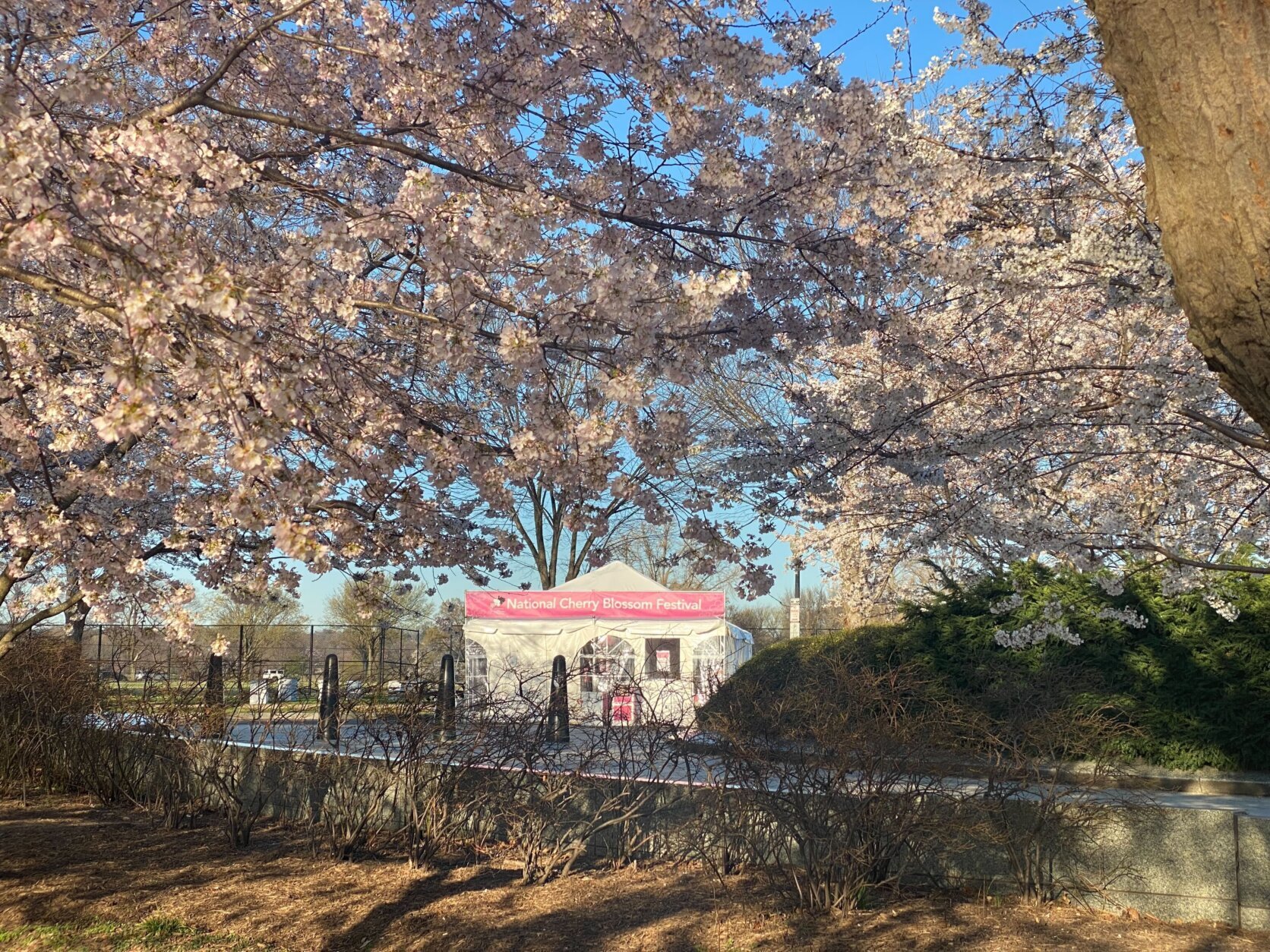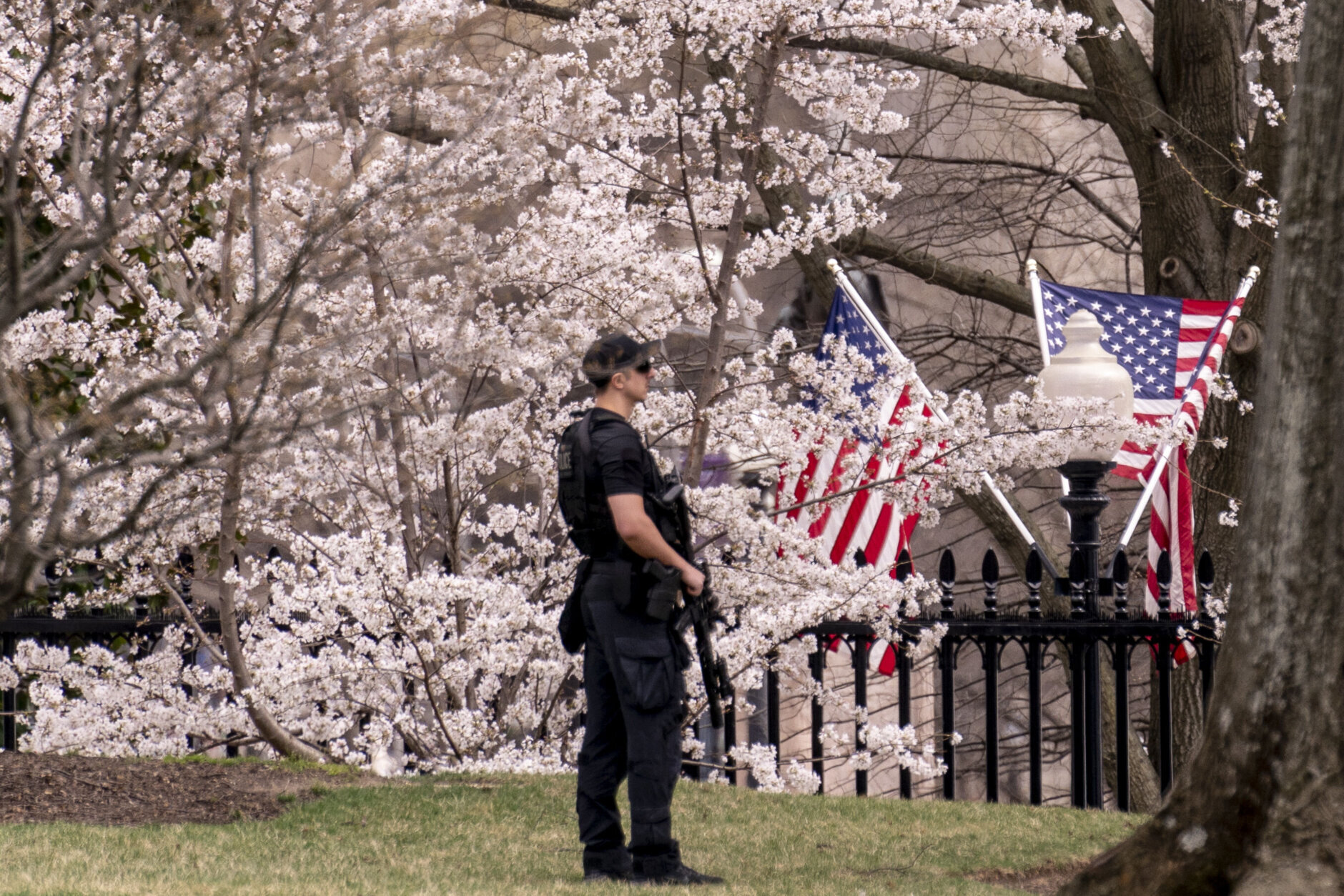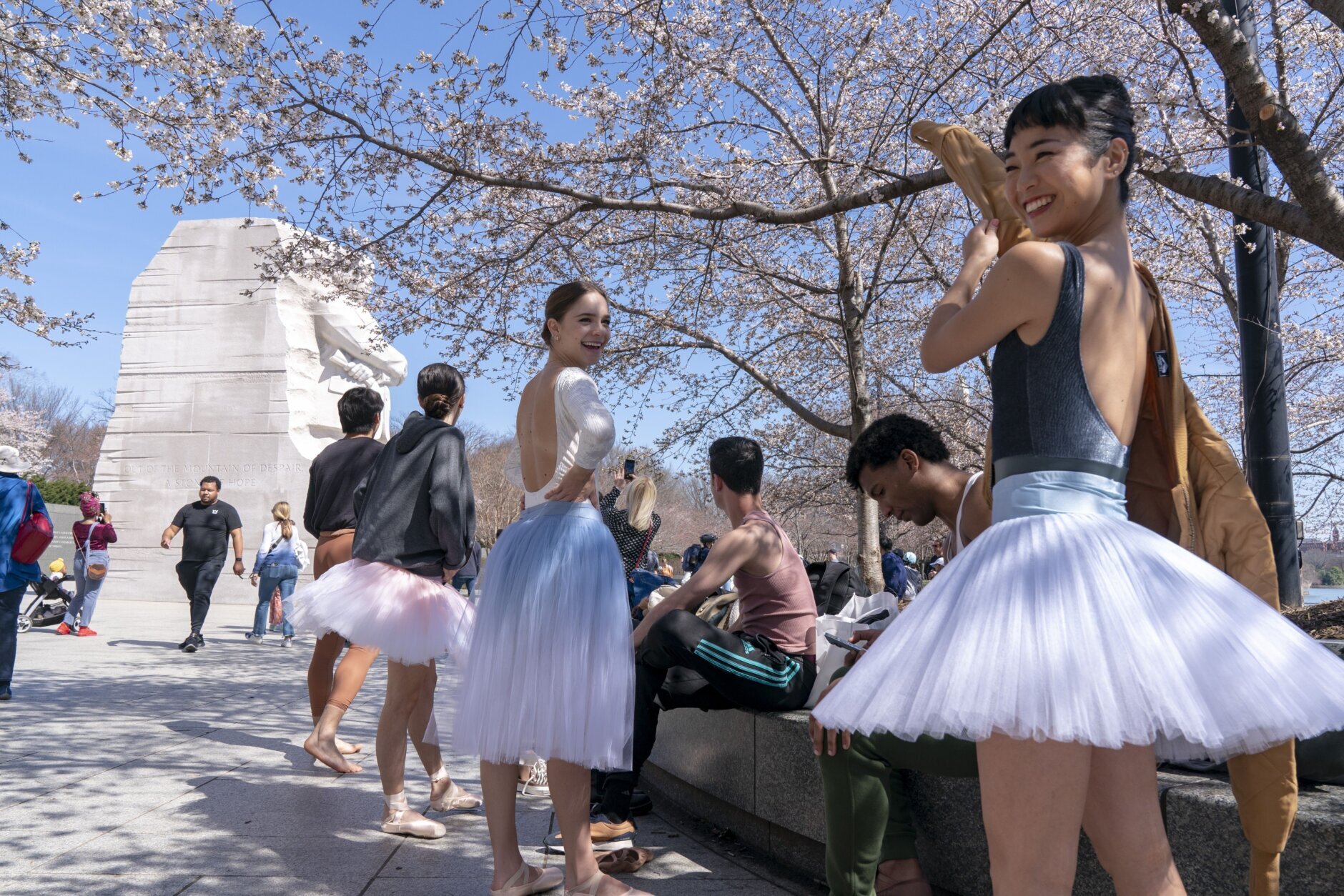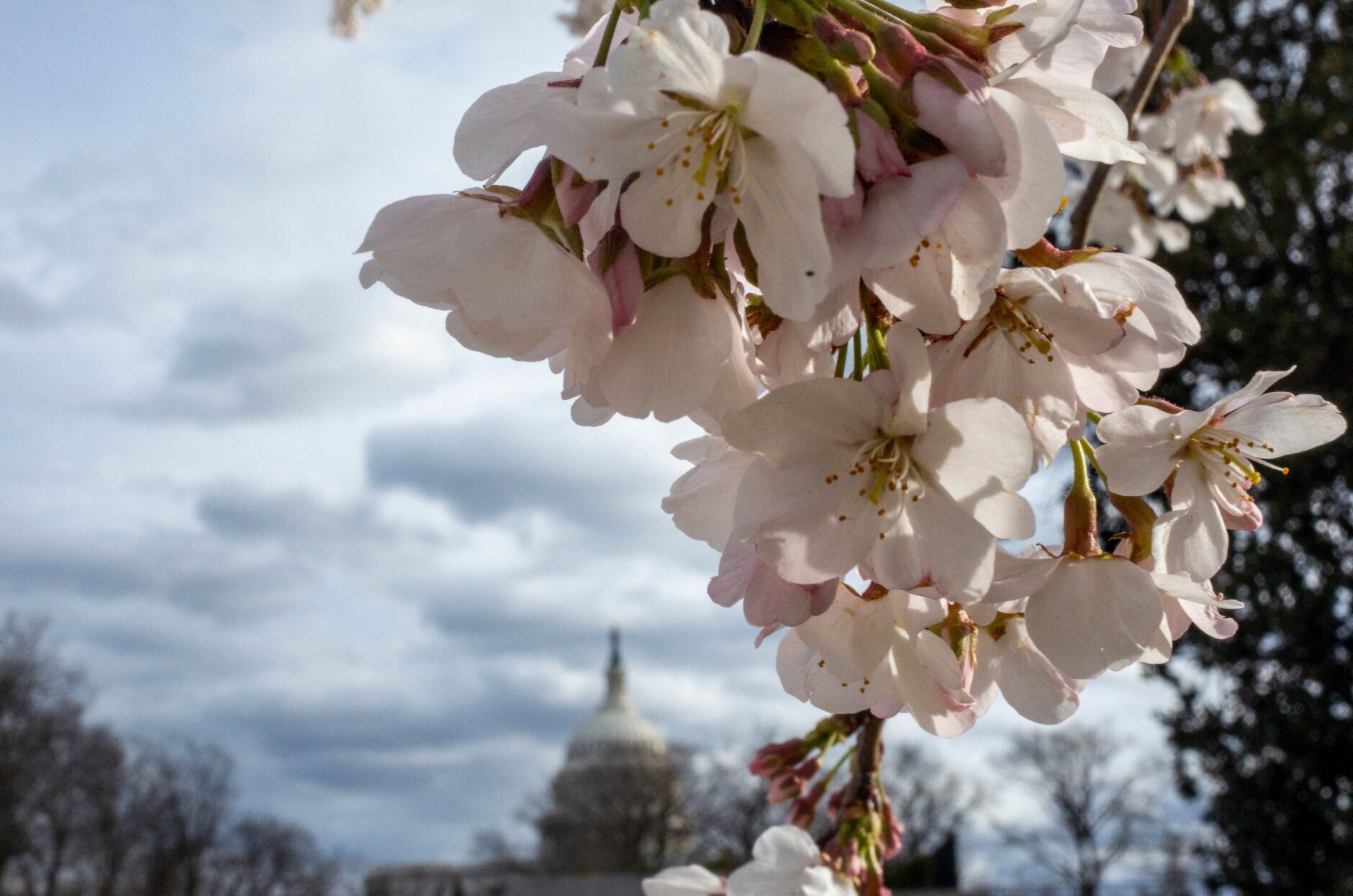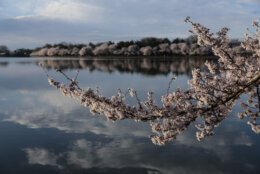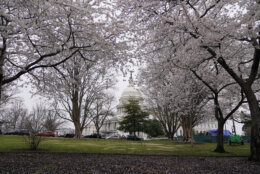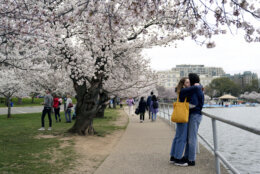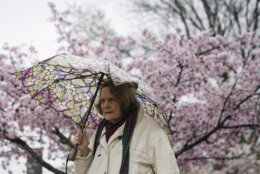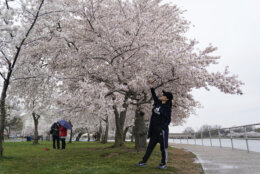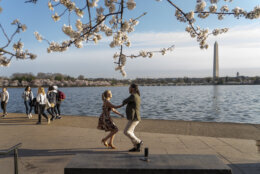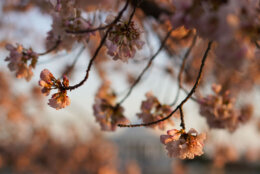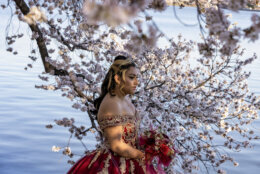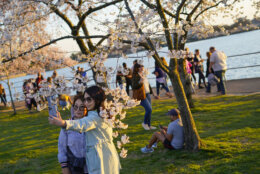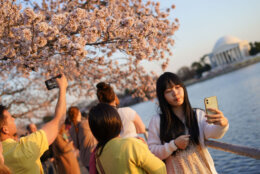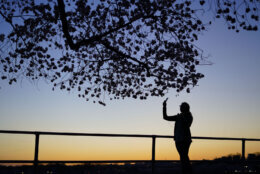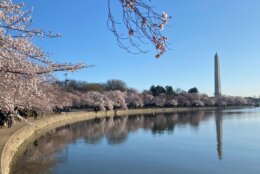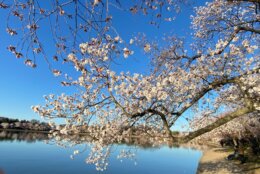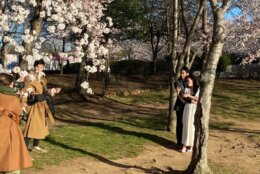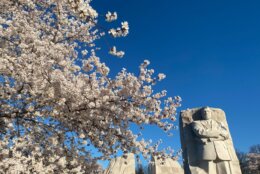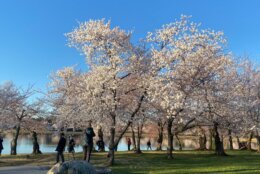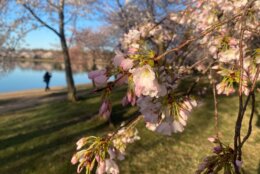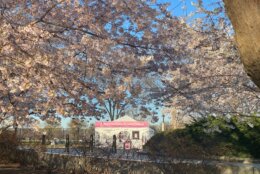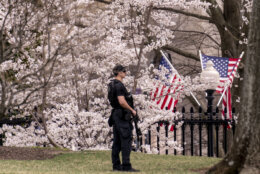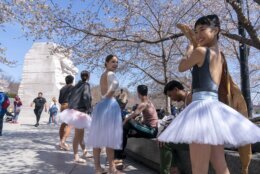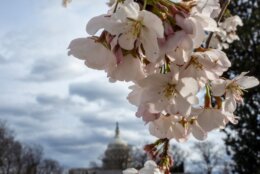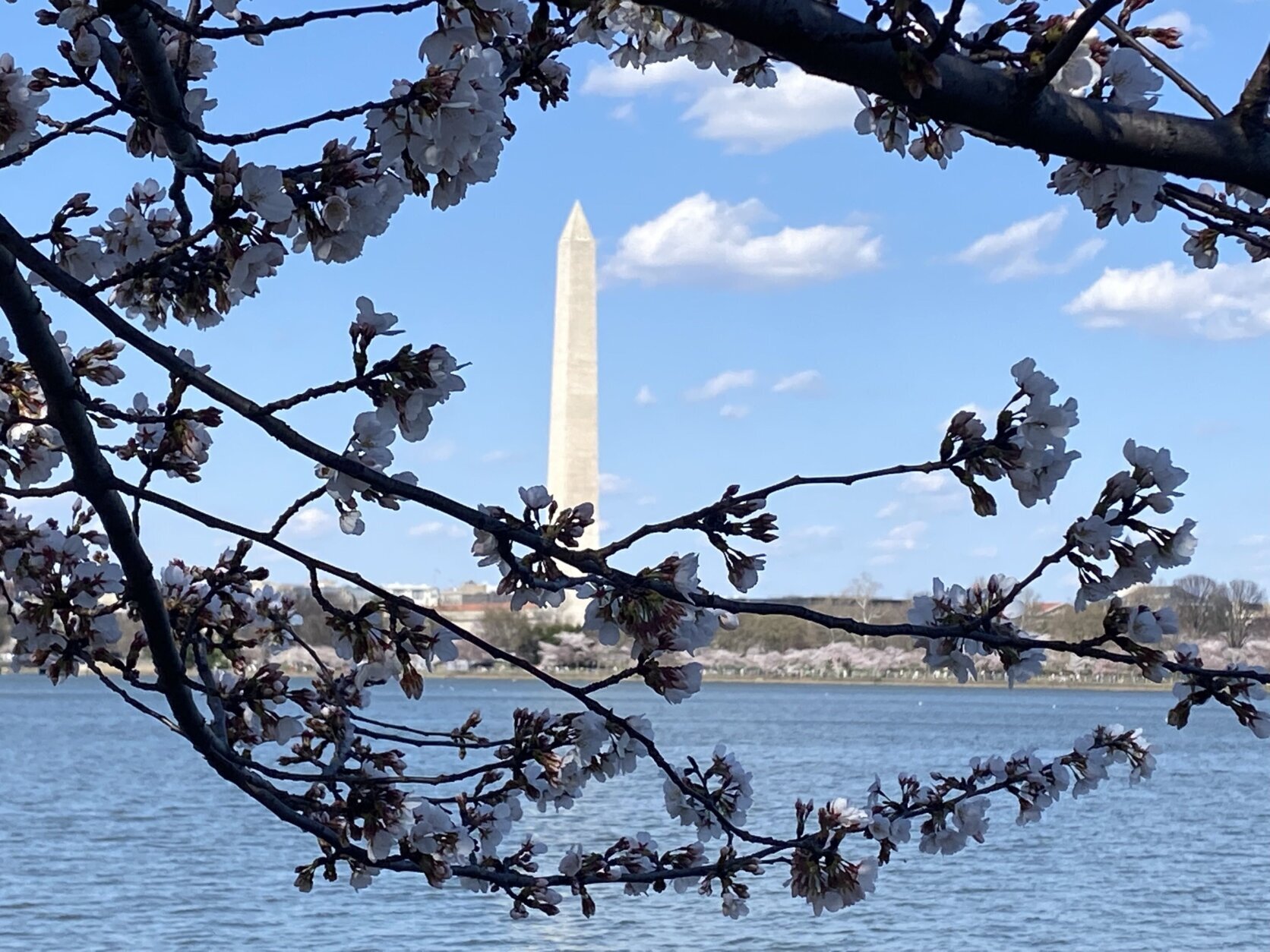
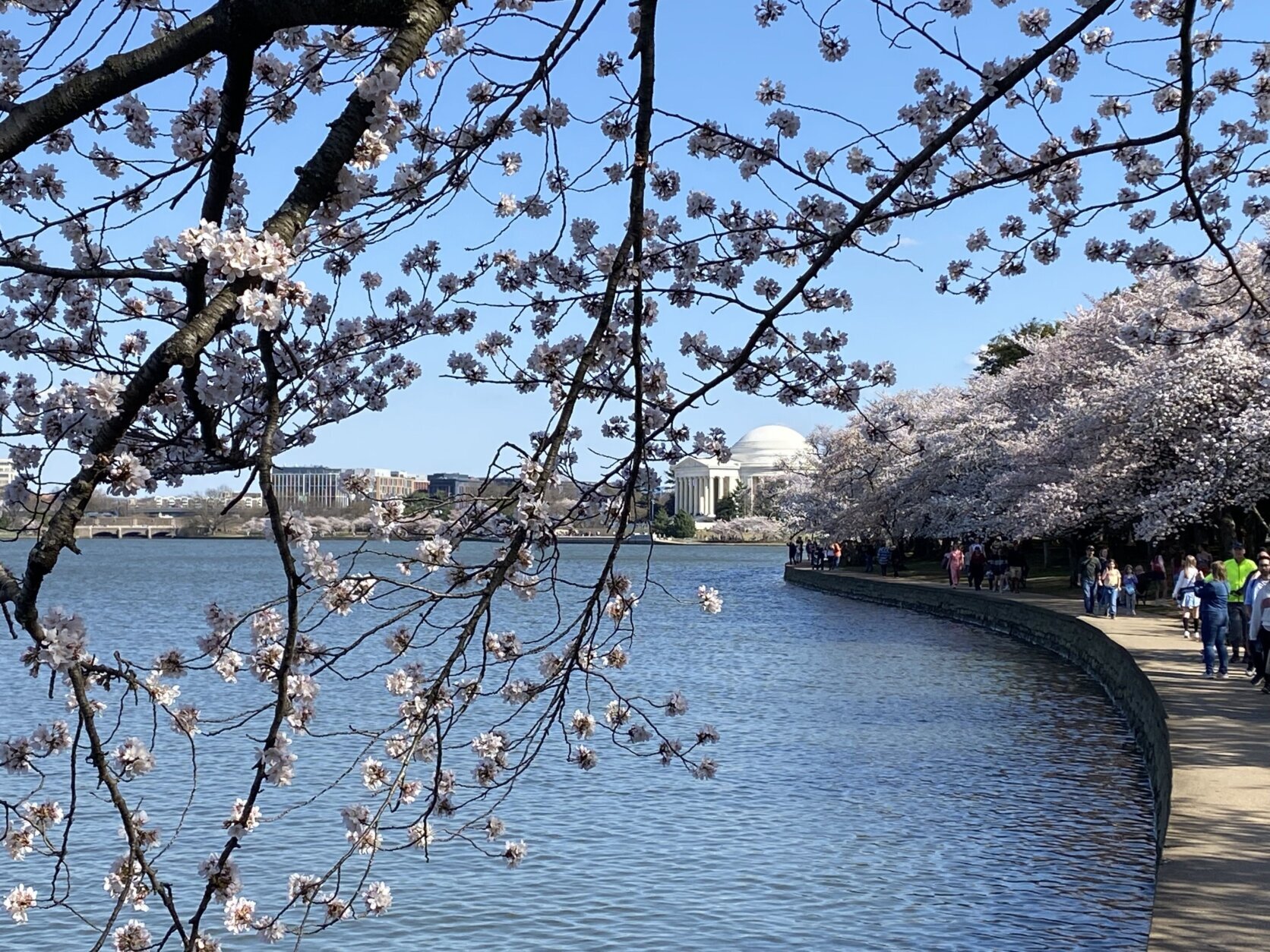
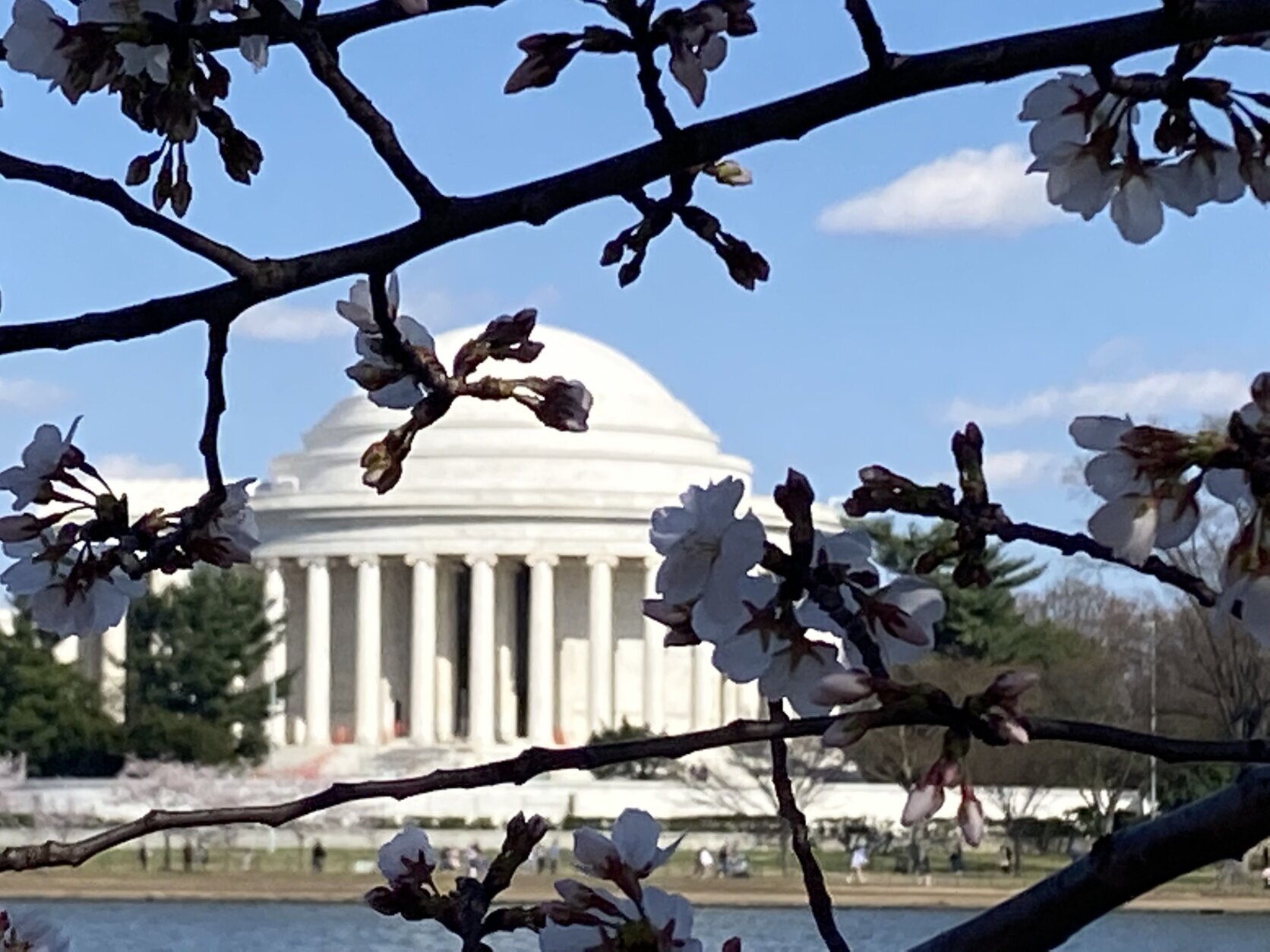
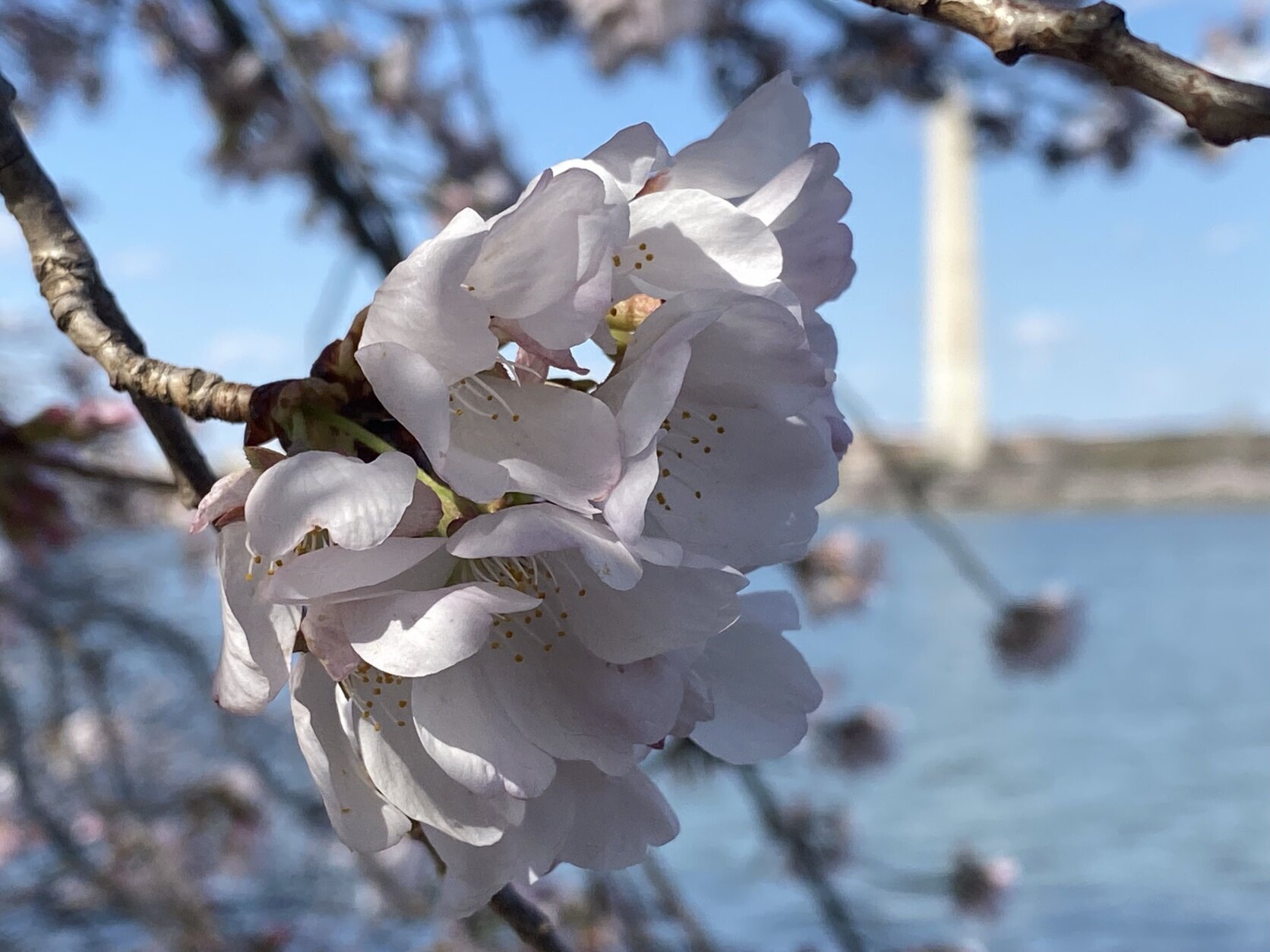
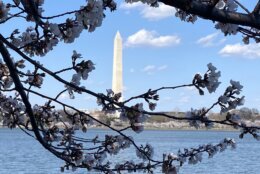

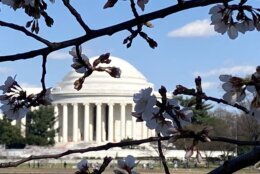
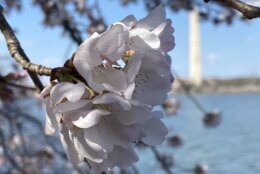
As D.C. cherry trees sprout their delicate pink flowers, drawing millions of visitors to the nation’s capital, the task for a team of expert arborists to keep them healthy shifts into high gear.
“They’re remarkably hearty,” said National Mall spokesman Mike Litterst. “But, we do have a full-time tree crew. We remind people when the blossoms are out to help us take care of the trees.”
Litterst said the tree crew has a few simple do’s and don’ts for guests.
“Don’t pick the blossoms. Keep the branches in place for other visitors,” he said. “Don’t climb the trees because some of them are probably over 100 years old.”
And stay on the foot path because too much foot traffic can damage the trees, Litterst said.
The specially trained tree crew cares for more than 3,700 cherry trees around D.C.
“We mulch. We prune. We do wound care, if necessary,” Litterst said. “It’s not too much different from what you would do with your own trees at home. It’s just we’re dealing with a lot more than most people have.”
The cherry trees were a gift from the city of Tokyo in 1912.
D.C. received at least a dozen varieties of the species. Most of them are Yoshino trees, which were planted around the Tidal Basin.
Yoshino cherry trees typically live between 50 and 60 years. But, with the proper care and feeding from arborists, some of the nation’s trees have doubled their life span.
Every year, the tree crew determines peak bloom season with the help of a special cherry tree, Litterst said.
“The Okame species is one of our indicator trees. It blooms about two weeks before the Yoshino,” he said. “So, we keep an eye on the Okame to tell us when the Yoshinos are going to be in bloom.”
This year, peak bloom season hit on Monday. But, the blossoms will stick around long after.
“When we talk about peak bloom, we’re talking about when the Yoshino trees are in blossom,” he said. “We have another variety, the Kwanzan trees, they’re in bloom about two weeks after the Yoshino trees.”



